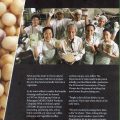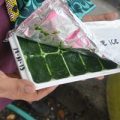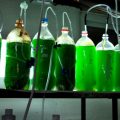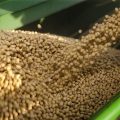One of the most important inputs in aquaculture is feed, and the most significant criteria of it are price, quality, quantity, availability, and efficient feeding system. The natural foods of fish are algae and plankton. However, under contained cultivation condition, the quality of the farmed fish depends mainly on the quality of the food that is being provided.

Today, defatted soybean meal is the most common, low-cost food for fish. However, soybean meal is not the natural diet of fish because it lacks in key compounds required for proper fish nutrition. Thus, the use of soybean meal presents a major limitation in providing healthy growth conditions in Philippine aquaculture. The challenge, therefore, is to provide the ideal natural foods for fish such as microalgae at a competitive price, high quality, and adequate quantity.
To address this, the Bureau of Agricultural Research (BAR), funded a project titled, “Development of Technology for Efficient Microalgae Production: Photobioreactor Design, Feed and High-value Metabolites” that aimed to provide superior fish food through the development of local microalgae. Under the leadership of phycologist and chemist professor, Dr. Fabian M. Dayrit of the Ateneo de Manila (ADMU), he developed a technology that is simple, reliable and efficient photobioreactor (PBR) design system to maximize the yield and optimized culture conditions for microalgae production of Spirulina.
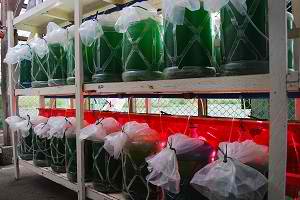
Spirulina (Arthrospira platensis) or the blue-green photosynthetic microalgae, known as the highest natural protein source, contains about 55-70 percent essential protein profile with a complete set of key compounds such as amino acids, polyunsaturated fatty-acids (PUFA’s), carotenoids, and vitamins A, C, D, E, B12 or cobalamin that boost the required nutritional diet of fish. One of the characteristics of this quality feed is the presence of natural constituents that has high value of nutraceuticals. These compounds include omega-3 fatty acids, carbohydrates, dietary minerals, and phycobiliproteins.
Due to its boundless nutrient contents, Dr. Dayrit highlighted the main benefits of feeding Spirulina for aquaculture purposes. Among the benefits include: 1) increase and give a more uniform growth rate for fish; 2) improve the digestion; as a result of more nutrition are extracted from the food and there are no indigestible components; 3.) boost the immune system and aid prevention of swollen abdomens due to blocked intestinal passages; and 4) enhance production of special enzymes that break down digested fats into energy rather than letting them build up in the fishes body.
Seeing its importance, Dr. Dayrit and his team fabricated an optimized PBR system and culture condition for the production of Spirulina. Unlike other PBR designs for algae growth, the features of developed enhance PBR are inexpensive, easy to clean, and re-use, subject in efficient illumination, and the materials are readily available so that the fabrication is easy and scalable.
Using the transparent polyethylene bag with cut-out plastic jug for its support are the inventive technology developed by the team as the PBR housing or the culturarium for algae. Part of their worked on photobioreactor systems is the involvement of prototypes designed to probe the effects of various parameters on microalgae growth in terms of the modification of culture media, light configuration and its culture process. As a result, the alpha PBR prototype showed a significant increase in growth rates in terms of cell count and cell size of Spirulina. The cost of power used for lighting system was low; the culture time was decreased and created as highest biomass yield improvement with approximately 70 percent increase in microalgae production.
The developed PBR system is now being undertaken by the Alsons Aquaculture Corporation, an industry partner based in Sarangani, Province, and one of the major aquaculture companies in the Philippines. The optimized PBR system and culture condition of Spirulina are transferred to Alsons where it will be scaled-up, further optimized and pilot tested to make the product market-ready. ### (Leoveliza C. Fontanil)
Source: bar.gov.ph
